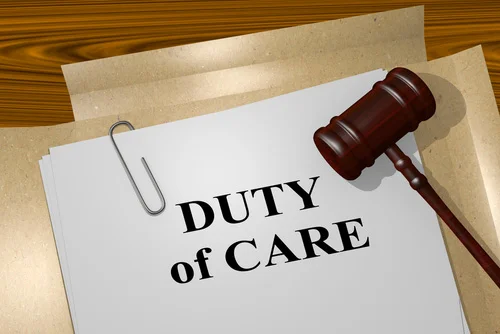Employer Plays Chicken with Its Obligations to Employee: District Court of New South Wales Awards Worker Damages After Sustaining Back Injury During the Course of Work in the Decision of Filiposka v Coles Supermarkets Australia Pty Ltd [2020] NSWDC 540
I. IN BRIEF
On 18 December 2020, the District Court of New South Wales handed down the decision of Filiposka v Coles Supermarkets Australia Pty Ltd [2020] NSWDC 540.[1] In this decision, Levy J found that an employer breached its duty of care by failing to implement and maintain a safe system of work.[2] Justice Levy rejected the employer’s allegations of contributory negligence and assessed the Plaintiff’s economic loss entitlements under the Workers Compensation Act 1987 (NSW) and the Workplace Injury Management and Workers Compensation Act 1998 (NSW) at $828,554.60 plus legal costs.[3]
II. THE MATERIAL FACTS
The worker was 45 years of age at the time of her accident.[4] She was employed in the capacity of a delicatessen manager at Coles in Brighton-Le Sands, having been in that position since 2007.[5]
The accident occurred on 31 December 2014 at 6:00 a.m. The worker arrived at Coles and was carrying out her early morning pre-opening work duties in the deli.[6] She was the only staff member rostered in the deli at this time.[7]
The worker’s duties on this particular morning consisted of removing crates of chicken carcasses from the ‘cool room’ and placing them in the oven for baking and sale.[8] This involved manually lifting the crates from a shelf and placing them on a flat trolley, pushing that trolley into the deli area and unloading the carcasses and placing them in the oven.[9]
The nature of the cool room was described by His Honour in the judgment. The floor space of the room on the day of the accident was ‘crowded with stored goods’, which acted as ‘blockages’ or ‘obstacles’. This limited the worker’s ability to manoeuvre in the cool room[10] and limited her to a relatively confined space to perform her duties.[11]
The worker lifted the first crate of chicken carcasses by approaching the shelf of the cage from the front, bending her knees whilst keeping her back straight, reaching forward with her arms, taking hold of the crate, lifting it, turning whilst holding it and placing the crate onto the trolley.[12] The worker also leaned forward with her body, took the weight and adopted a twisting movement to the left to place the crate on the trolley. The first crate was placed on the trolley uneventfully.[13]
It was the second crate that caused the worker’s injury. The worker prepared and positioned herself to perform the same manoeuvre. This second crate was located on the same shelf as the first, but was situated at a deeper location. This required that she reach down further into the cage in a bent position in order to grip the crate.[14]
The worker was bent down to a very low position in a forward flexed position (estimated to have been around 45 degrees) and in a more forward reaching motion than was required the first time she performed the manoeuvre.[15] As the worker was carrying out that more difficult[16] forward reaching, lifting and twisting action whilst holding onto the sides of the crate, she felt a painful sensation in her back. By reason of the severity of the sensation, she fell to the floor. The worker called out for an employee from another area to assist her. She left her workplace to receive treatment.[17]
The worker alleged that she sustained a disc bulge at L4/5 and a focal left-sided disc protrusion at the lumbosacral level (a back injury) and chronic pain syndrome.[18] She relied on expert medical evidence from an orthopaedic surgeon and a consultant neurological surgeon.[19] The employer obtained expert medical evidence from an orthopaedic surgeon and vocational assessor.[20] The worker reported a number of ongoing disabilities at the time of the trial, including an inability to work.[21]
In the case of Filiposka v Coles Supermarkets Australia Pty Ltd, both parties relied on expert liability reports, but His Honour ultimately found that the reports were not determinative of the issues he was required to decide in the proceedings. His Honour characterised the reports as being capable of serving as a guide to the findings only.[22]
III. RELEVANT LEGAL PRINCIPLES
The decision turned upon a determination of:
- The duty of care owed to the worker by the employer (including the scope and content of that duty);
- Whether the employer breached that duty of care;
- Whether the breach was the relevant cause of the worker’s injury (‘causation’);
- Whether the worker failed to take precautions for her own safety (‘contributory negligence’); and
- The worker’s entitlement to damages upon establishing the employer’s negligence.
IV. THE DECISION – WAS THE EMPLOYER NEGLIGENT?
His Honour concluded that the employer was negligent.[23] In doing so, he considered a number of critical questions.
A. What was the Relevant Risk of Harm?
His Honour characterised the relevant risk of harm in this case as being the foreseeable and not insignificant risk of an employee, in the worker’s position, incurring a back injury whilst lifting, carrying and manipulating goods to relocate them if reasonable care was not taken by the employer to consider employee safety in that work system.[24]
B. Duty of Care – Nature and Scope
His Honour elucidated the duty of care owed by employers to employees, as established in the common law. He characterised that duty as non-delegable and observed that the duty encompassed reasonable care to be taken to avoid exposing workers to unnecessary risks of harm from injury.[25] Justice Levy concluded that where there is a real risk of injury to an employee in the performance of a task in the workplace, the employer must take reasonable care to avoid the risk by devising a method of work that eliminates the risk or provides adequate safeguards.[26]
C. Breach of Duty, Foreseeability and Precautions
His Honour concluded that a reasonable employer in the position of the subject employer would have foreseen that the work tasks in which the worker was involved in involved a risk of injury.[27] He observed that a task requiring a worker to lean forward in an ‘awkward posture’ to pick up and move crates of weighty merchandise in ‘relatively confined spaces in a twisting movement with limited scope for manoeuvrability’ carried with it a foreseeable risk of injury.[28]
Justice Levy further concluded that a reasonable person in the position of the subject employer would have haven precautions to avoid such risks. His Honour described such precautions to include rostering additional staff to assist with the heavy lifting tasks, ensuring that there was adequate space in the cool room for manoeuvrability and undertaking a specific risk assessment.[29] His Honour was of the view that the burden of taking such precautious was minimal, particularly in circumstances where the employer employed staff in significant numbers across various areas of the supermarket.[30]
His Honour ultimately held that the employer failed to take reasonable care for the worker’s safety by failing to take reasonable precautions and failing to implement and maintain a safe system of work.[31] He found that the system of work in this case left the worker foreseeably and avoidably exposed to the risk of a back injury.[32]
D. Causation
Justice Levy held that the back injury ‘most probably’ would not have occurred but for the employer’s breach of its duty of care.[33] His Honour observed that if there was additional assistance offered to the worker to assist with occasional awkward lifting, there would not have been a need for the worker to manoeuvre in such a way.[34]
E. Contributory Negligence
His Honour rejected the employer’s pleaded allegations of contributory negligence, including the assertion that the worker failed to take adequate care for her own safety and seek assistance.[35] In doing so, Levy J described the worker as being at the mercy of the employer’s system of work.[36] His Honour considered the training provided to the worker to be limited and found that the worker did her best to comply with the employer’s requirements under difficult circumstances, largely imposed by budgetary restraints.[37]
I. THE DECISION – MITIGATION AND DAMAGES
As the worker established the necessary ingredients for a finding of negligence against her employer, His Honour was required to assess the worker’s claim for damages. In making his assessment, His Honour was satisfied that the worker had acted reasonably to mitigate her damages.[38] His assessment was limited to damages of an economic loss nature as the cause of action was for work injury damages.
His Honour ultimately awarded the worker $828,554.60[39] plus legal costs,[40] with the largest component of the award consisting of future economic loss.
II. LESSONS FROM THIS DECISION – Filiposka v Coles Supermarkets Australia Pty Ltd
Justice Levy’s observations at paragraph [94] capture the flavour of this employer’s failings and serve as an important reminder to employers across Australia: ‘in this case, it seems that management allowed budgetary considerations to prevail over safety considerations…[41]
We all go to work expecting to come home in the same way we arrive. In this case, the Court emphasised the utmost importance of maintaining an employee’s safety over other considerations such as making money and keeping costs down.
An employer’s obligation to provide a safe workplace cannot be delegated or treated as a secondary consideration. Employee safety must be at the forefront of every system and process in a workplace. If it is sacrificed for other considerations, as it was in this case, then the employer risks not only liability to pay damages, but also the lives of its most valuable resources: employees.
Stacks Goudkamp has extensive experience acting for workers who have been injured in workplace accidents. For more information, and to arrange a free, no-obligation assessment of your claim, please contact Stacks Goudkamp on (02) 4058 3114, or alternatively, make an online enquiry.
Written by Megan Sault
[1] Filiposka v Coles Supermarkets Australia Pty Ltd [2020] NSWDC 540.
[2] Ibid [95] (Levy J).
[3] Ibid [115-7].
[4] Ibid [33].
[5] Ibid.
[6] Ibid [2].
[7] Ibid.
[8] Ibid [51].
[9] Ibid [52].
[10] Ibid.
[11] Ibid [54].
[12] Ibid.
[13] Ibid.
[14] Ibid [56].
[15] Ibid.
[16] Ibid [57].
[17] Ibid [58].
[18] Ibid [61].
[19] Ibid.
[20] Ibid.
[21] Ibid [62-3].
[22] Ibid [31].
[23] Ibid [95].
[24] Ibid [71-3].
[25] Ibid [74].
[26] Ibid [75].
[27] Ibid [84].
[28] Ibid [86].
[29] Ibid [90].
[30] Ibid [93].
[31] Ibid [95].
[32] Ibid [96].
[33] Ibid [98-9].
[34] Ibid.
[35] Ibid [100].
[36] Ibid [102].
[37] Ibid [104].
[38] Ibid [66].
[39] Ibid [115].
[40] Ibid [117].
[41] Ibid [94].



